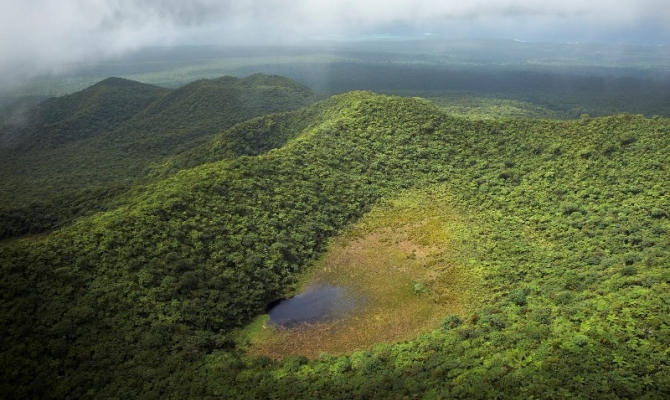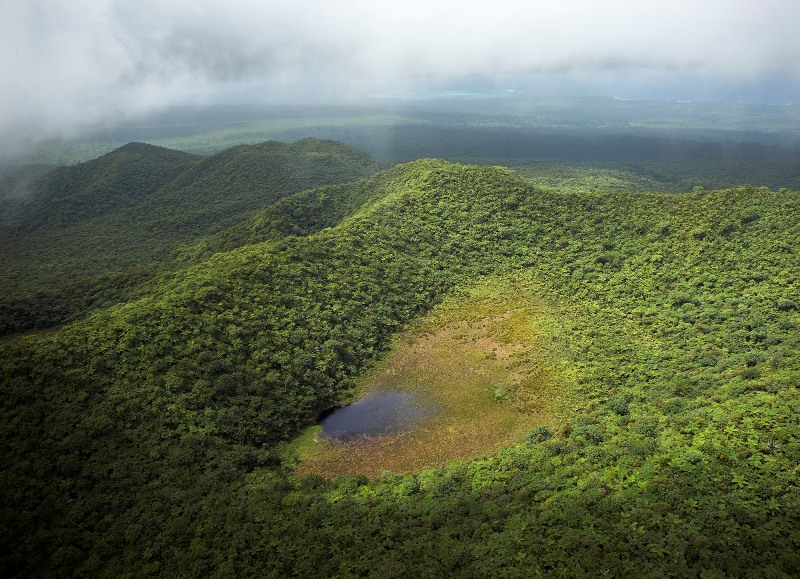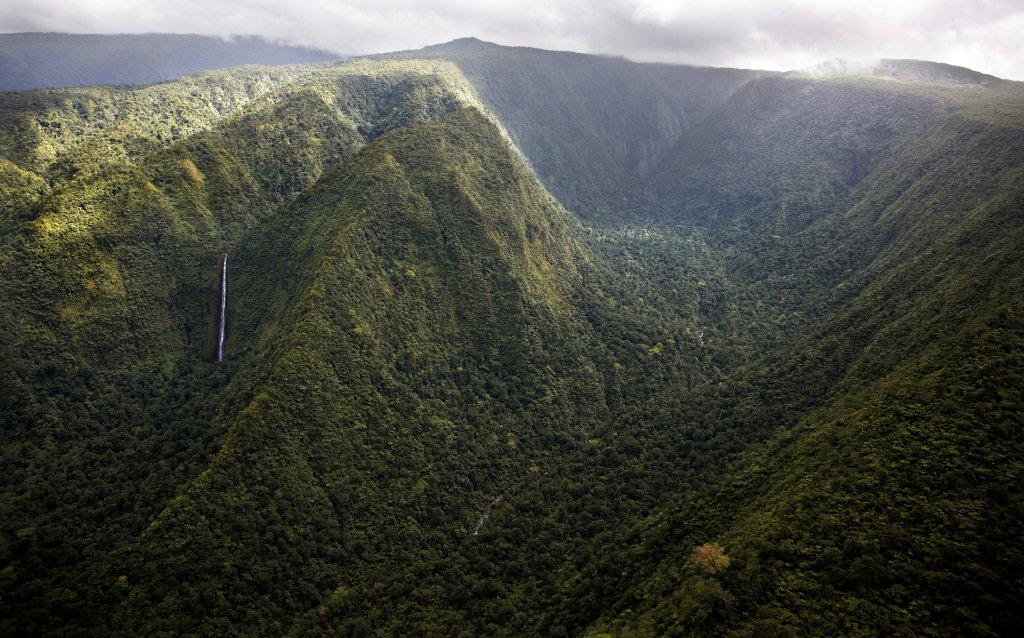
-- FEATURE ARTICLE --
The cloud forest of Savaii could look like a wildlife scene out of a David Attenborough nature film next week, once biodiversity specialists and community members set up camp in untouched forestlands to conduct a special survey of the flora and fauna.
Known as the BIORAP, this project is the Rapid Biological Survey of the plants, birds and animals; the kaleidoscope of living creatures that inhabit the forests of Savaii. It will be the first time for the biodiversity in these cloud forests to be properly surveyed.
The BIORAP is very much a joint partner initiative that involves the Ministry of Natural Resources and Environment, Secretariat of the Pacific Regional Environment Programme, Conservation International, New Zealand Department of Conservation and the NZ Defence Force, as well as several other cooperating agencies. Funding is being provided by the Critical Ecosystem Partnership Fund.
A select team of wildlife biologists and locals will venture into approximately 65,000 hectares of cloud forest owned by village communities on Savaii, who are responsible for the care and stewardship of these natural resources.
Samoa, in particular Savaii, is of special biodiversity significance with the island ranked 23rd out of 226 South Pacific Islands in terms of conservation value. Savaii's forest ecosystem has been rated by Conservation International as one of two hotspots for biodiversity in Samoa and, it has also been said that the Savaii cloud forests are the largest remaining intact high-altitude forests in Polynesia.
The cloud forests could hold the key to the survival of the Samoan Woodhen puna'e which has not been recorded since 1873. A detailed survey of the habitat could also confirm the conservation of the tooth-billed pigeon manumea and even more exciting is the prospect of the project team discovering a new species.
Overall, the results from the BIORAP will greatly improve our understanding of the state of Samoa's endemic species. Information gathered during the BIORAP will be used to strengthen the ability of both MNRE and the communities to develop co-management approaches for the planning and long-term management of cloud forests. Ultimately the fate of globally and nationally significant biodiversity, including valuable forest resources and ecosystems, rests largely in the hands of local communities.
 South Tuasivi Ridge, Savaii, Samoa / © S. Chape
South Tuasivi Ridge, Savaii, Samoa / © S. Chape
The Ministry of Natural Resources and Environment (MNRE) is leading the consultations with the villages involved. They have also been working with the NZ High Commission, Samoa Office to seek support of the NZ Defence Force to provide helicopter support during the survey as the isolated and harsh area provides logistical challenges. MNRE will contribute staff time to assist the team of experts and help establish the base camp.
Species management is highlighted in the National Biodiversity and Action Plan for Samoa 2001. The objective for species management is to undertake a research programme to complete the collection and identification of Samoa's fauna and flora.
"It has been 20 years since the first lowland forest and biological survey of Samoa was conducted and 14 years since the upland ecological survey of the forest was completed," said Faleafaga Toni Tipamaa, the Assistant Chief Executive Officer of MNRE.
"The remaining forest that is included in this survey will complete the flora survey of Samoa. It's all part of the work we are doing under the Convention of Biological Diversity, we are implementing the 2011 – 2020 targets that were recommended at the Conference of the Parties in Nagoya two years ago."
Faleafaga pays tribute to the special year and celebration for Samoa, saying the BIORAP project is one of monumental history and a major achievement for the island nation.
"Samoa celebrates its 50th year of independence this year - having this survey and completing our stock take of the flora and fauna of Samoa's biodiversity is a milestone for monitoring for the next 50 years."
A wide range of partners are coming together to conduct the BIORAP including the various local communities on Savaii. This is a key phase in the project as the support and involvement of the local community is at the core of the project's success.
The next exciting step in the project is the actual survey itself.
MNRE staff, local villagers and other interested groups and individuals in Samoa will be trained in survey skills and techniques. From this point, the team of surveyors embarks on the journey into the cloud forest to set up camp and begin surveying the land area. The success of the survey will be greatly enhanced by the use of a New Zealand Defence Force helicopter, which has been generously made available for 10 days to move people and equipment around this rugged terrain.
"In the Pacific region our biodiversity is of global significance, but is highly at risk. Extinction rates in the region, especially for birds, are among the highest in the world. We all know the reasons – loss of habitat, resource exploitation and increasingly external factors such a climate change," said Mr. David Sheppard, the Director-General of SPREP.
 Sinaloa Falls, Tuasivi Ridge, Savaii, Samoa / © S. Chape
Sinaloa Falls, Tuasivi Ridge, Savaii, Samoa / © S. Chape
"What is needed is practical action to address these problems. Biodiversity cannot be separated from sustainable development in the Pacific and SPREP is happy to have taken an instrumental role in initiating this important survey which supports our overall strategic priorities on biodiversity and ecosystem management."
Based upon the findings of the field surveys and subsequent analysis, a set of recommendations will be formulated and these will include management and policy options for the Government of Samoa and communities to consider. These will focus on developing options for both the conservation and appropriate sustainable use of the cloud forests of Savaii and the species within them.
Invasive species such as cats, pigs and rats have already been identified as a significant threat and particular attention will be given during the survey to estimate the extent of damage caused by these unwanted invaders and other potential threats will also be identified.
The third stage of the BIORAP will see the results of the survey being shared with the local communities in Savaii as the beginning of a series of actions by all partners that will help strengthen nature conservation of the cloud forests. Subsequent conservation proposals and activities will be based upon the results of the BIORAP survey.
The bulk of the funding for the BIORAP survey is being provided by the Critical Ecosystem Partnership Fund (CEPF), which is a joint programme between the Government of France (l'Agence Française de Développement), Conservation International, the Global Environment Facility, the Government of Japan, the MacArthur Foundation and the World Bank.
Conservation International manages the CEPF programme in the Polynesia-Micronesia biodiversity hotspot. CI's Executive Director for the Pacific Islands Programme, Mike Donoghue, says that this project is an important investment because the Pacific Islands is one of the most biologically rich and yet threatened of the Earth's 34 biodiversity hotspots.
Only 21 percent of the region's original vegetation currently remains in pristine condition, and this includes the cloud forest of Savaii.
"People need nature to thrive," he says.
"The protection and preservation of natural capital is the most important challenge facing humankind. Nowhere on the planet is that more important than in the Pacific Islands which are heavily impacted by climate change and invasive species. Preserving our remaining wild places such as the Savaii cloud forests is essential to provide people with clean water and air, upon which we all depend."
The BIORAP survey will begin next week and will be completed by the end of May.
For more information please contact SPREP's Terrestrial Ecosystems Management Officer, Mr Bruce Jefferies.